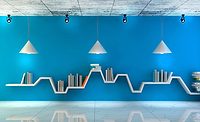Regional Variation in the Architectural Coatings Market - It Is Not One Market!

The United States Census Bureau identifies four macro regions (see Figure 1). These are the Northeast, South, Midwest and West. Recent studies by Orr & Boss, a Plymouth, MI-based consulting firm for the coatings industry, have revealed that there is significant variation in both customer segmentation and channel of distribution preferences across the census regions. Furthermore, these studies reveal that demographic, economic and end-use factors drive this variation.


The South and the West lead the U.S. in the amount of architectural painting performed by professionals, with nearly 70% of all architectural coatings revenues derived from professional painters. The Midwest, conversely, has the highest percentage of revenues from DIY customers. This variation in customer distribution is driven by demographic and economic factors. The U.S. as a whole is growing much more rapidly in the South and West (see Figure 4). The rapid growth in these regions fuels new construction of residential and commercial properties. By and large, the DIY customer is not involved in new construction. It is the professional painter who services this end-use segment.

Each of these channels has unique characteristics. These include predominant clientele, price structure and customer key buying factors. Definitions of the channel members are listed in the table.
Company-owned paint stores dominate the South and West, where new construction has been heaviest. In contrast, the Northeast, with older buildings and a high percentage of repaint work, has the highest usage of the independent dealer channel. The Midwest, with its large DIY customer base, has the greatest percentage of paint sales through the mass merchants.

Understanding variation in customer segmentation and in predominant channels of distribution can be crucial to the success of both regional and national architectural coatings suppliers. Regional suppliers must recognize their core customer base and align their channel strategy to meet those customers' needs. National companies must realize that the architectural coatings market in the United States is not one market and cannot be treated as such. Across the country, there are different customers, with different key buying factors, who buy through different channels. The companies that recognize these differences and act on them will be positioned for success. Those that don't will be left behind.
Definition of Distribution Channels for Architectural Paint
Company-Owned StoresRetail outlets owned by paint manufacturers. In almost all cases, stores target the contractor market. Key examples are Sherwin-Williams, ICI, Duron, etc.
Mass Merchants
Major retail chains selling paint through multiple outlets. Key members of this channel are:
- (a) Home centers such as Home Depot and Lowes.
(b) Discount stores like Wal*Mart or K-Mart.
(c) Department stores such as Sears.
Independent
Independently owned, smaller retailers selling Dealers paint. This channel splits into three sub-channels:
- (a) Contractor oriented specialty paint dealers, indistinguishable in their operations from paint company stores.
(b) Hardware stores selling paint and a variety of other home improvement items, e.g., Tru-Serv and Ace.
(c) Decorator centers selling window treatments, wall and floor coverings, and almost incidentally, a little paint.
For more information on architectural coatings, contact Orr & Boss, 44450 Pinetree Drive, Plymouth, MI 48170-3869; call 734/453.3033; fax 734/453.4320; visit www.orrandboss.com; or Circle Number 75.
Links
Looking for a reprint of this article?
From high-res PDFs to custom plaques, order your copy today!




